Of the Moon and Melatonin
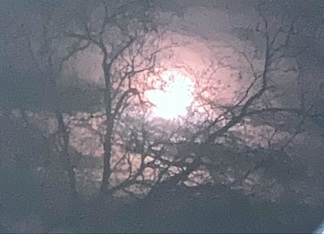
Visiting Doris’ brother Tom during our time at Tuscon’s BLM campground was always a priority, as she had often spoken about him and his in-depth knowledge of all things pertaining to the stars. However I did not expect the experience to be life changing.
Throughout the ten day Tucson gathering, the mysteries of nature and the stars pervaded each meeting, frustrating the efforts of the volunteer leaders to schedule the event with any certainty, due to the constraints imposed upon all stargazers, those of weather and the moon’s cycles.

The large silver orb that thrills those of us who enjoy howling at the full Moon, as we did after a ‘Burn Your Own’ dinner around the campfire, is not so fun for those who want to study the stars in the evening, as natural moonlight washes out the light from most stars leaving only the brightest visible. Then of course as a sailor I’m no stranger to having to plan around the weather, we dodged overcast evenings right up to the night before we were due to move on to the next WIN gathering.

On arriving at Dorris’ brother’s house deep in the desert, Mr Thomas E. Reinert, Jr., President of the International Dark Sky Association and his good lady, Christine, greeted us with lashings of pizza taken on the patio. A roaring fire in the ‘chiminea’ warmed us as the sun obligingly bowed out below the horizon leaving the stage clear for action.
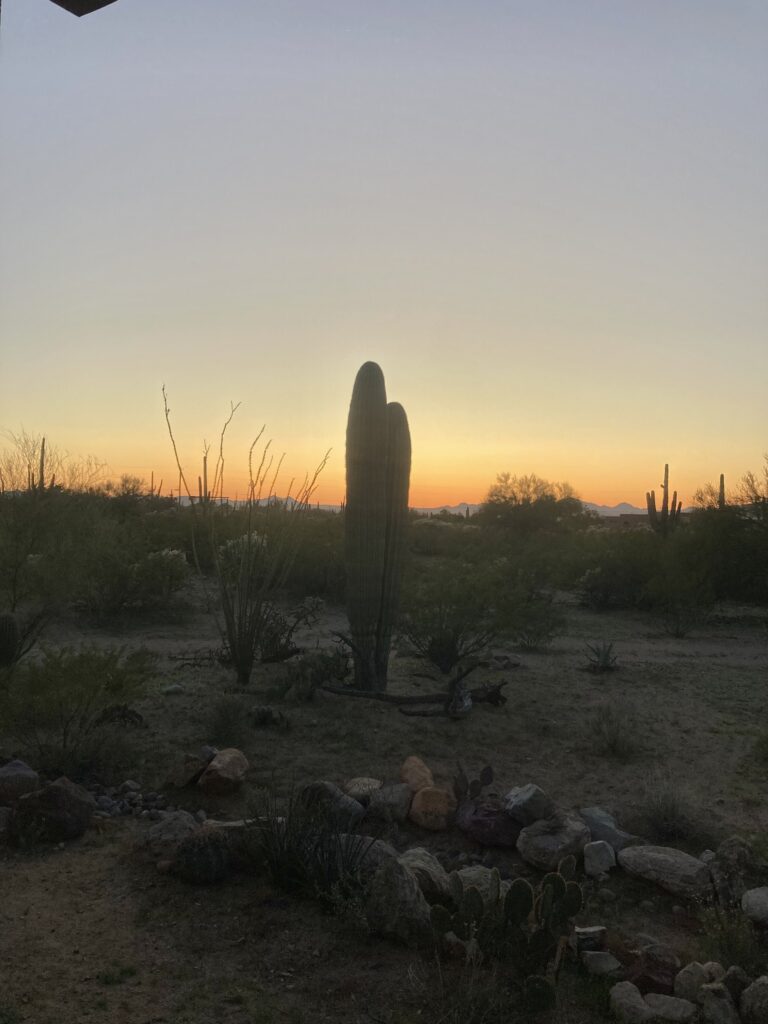
At 6:28 pm Tom drew our attention to the various bat houses built under the eves of their octagonal home, announcing that the nightly exodus of the inhabitants might start at any moment, and sure enough, on queue at 6:30pm the flying mammals streamed out at speed, vanishing into the gathering darkness.
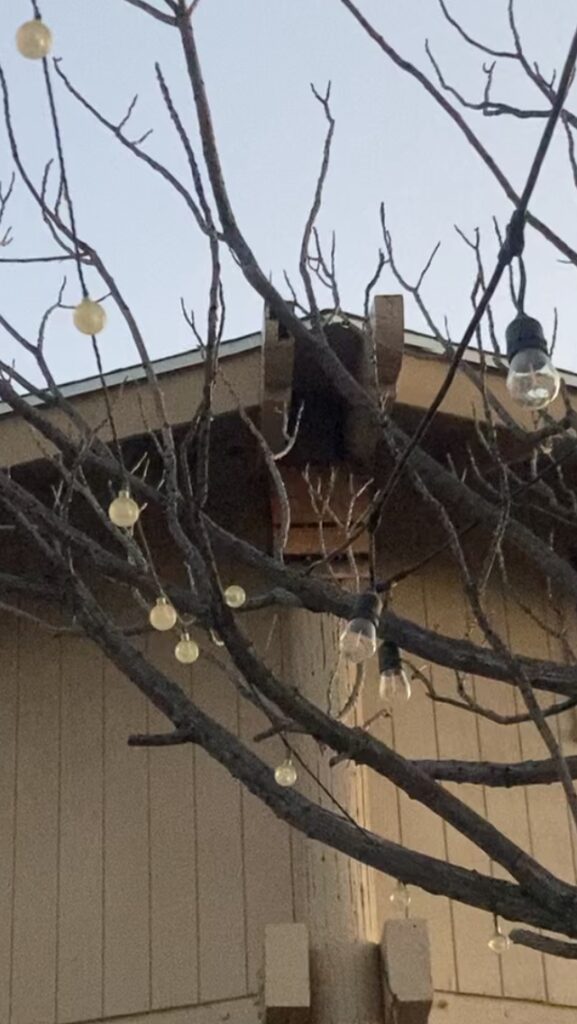
When someone asked what type of bat they were, Tom answered “Little brown bats” I assumed that his scientific knowledge of heavenly bodies did not extend to the subspecies of the local flying mammals. Much as ornithologists might refer to various tiny passerines on the periphery of their birdwatching focus as LBJ’s or ‘Little Brown Jobs’. However I was assuming too much, for the Little Brown Bat has a scientific name Myotis lucifugus and ranges over all of North America from the Alaska-Canadian boreal forests south through most of the contiguous United States and into central Mexico. That is not to say they are happily abundant, for in addition to loss of habitat, one of the most dire threats to their population comes from white-nose syndrome, a disease that has decimated bats in the U.S. and Canada. So we are very grateful that Tom and Christine offer a safe refuge to these amazing animals, where they can live and multiply, going out each night to help protect us from flying insects. They target midges, gnats and wasps as well as many other flying insects, helping to make our evenings under the stars safer too!
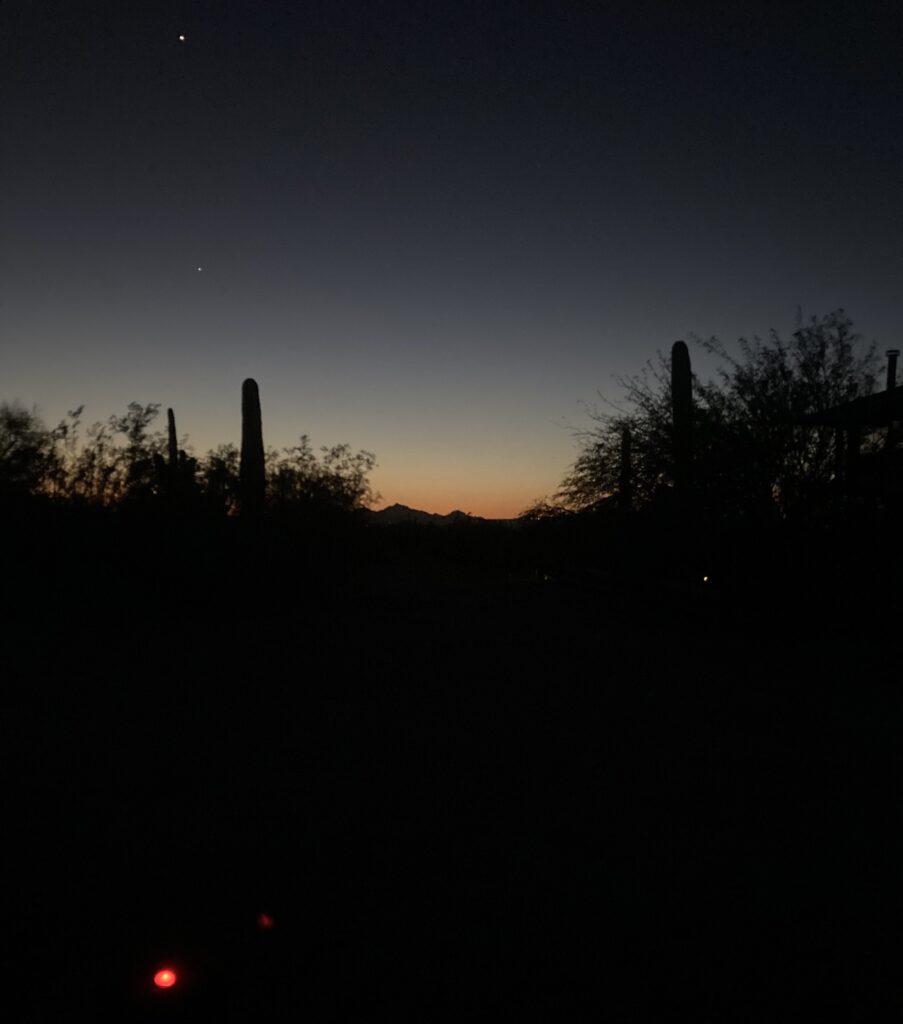
Next Venus and Jupiter made an appearance. With the help of a large telescope which Tom had set up, we were all able to view three or four of the Galilean Moons of Jupiter; Europa, Io, Ganemede and Balisto. Then using a laser pointer, Tom gave us a quick guide to some of the brightest stars in the sky among the two thousand visible, as well as their constellations.
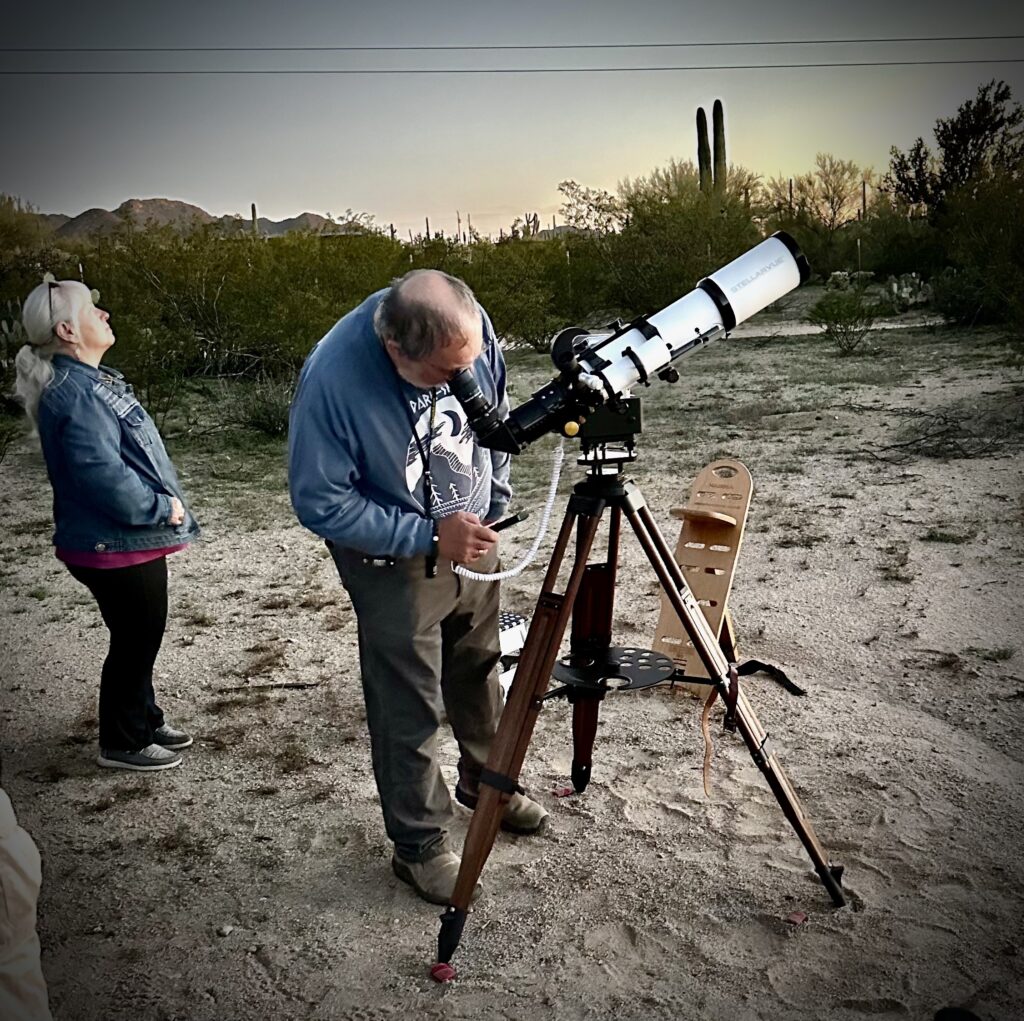
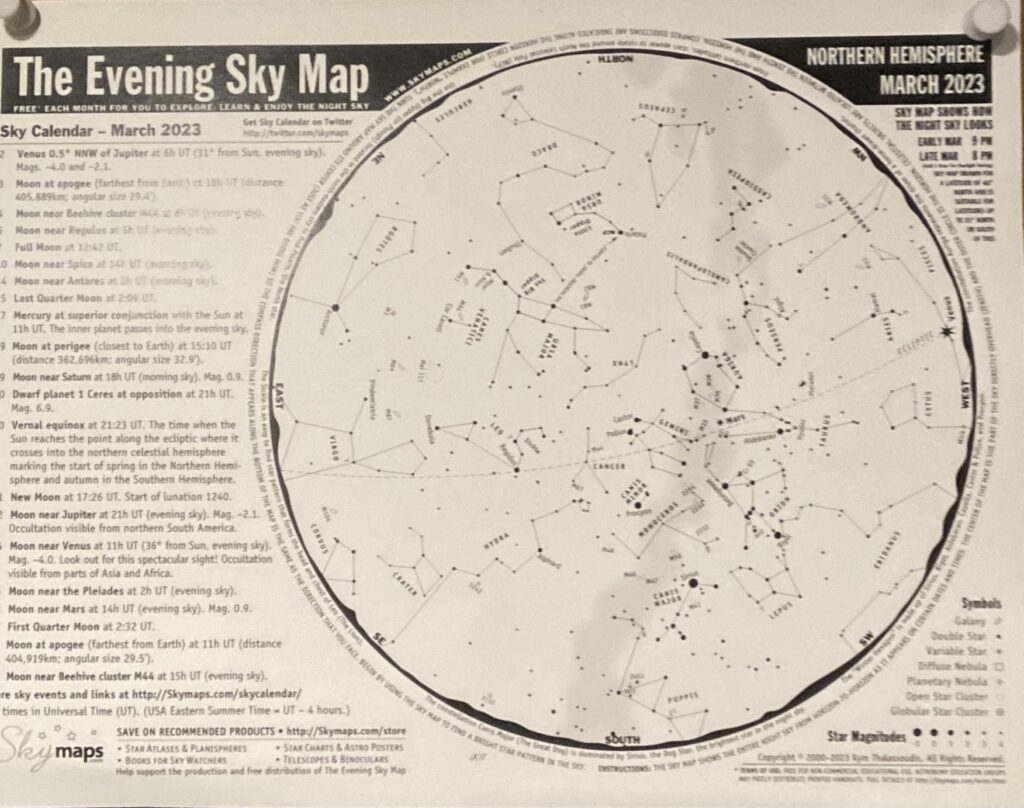
Next Tom focussed on some dimmer objects, and we were able to see a misty jewel in Orion’s Sword, our nearest galaxy, Andromeda! The ‘space’ between the galaxies now became our focus and Tom helpfully clarified the definition of Dark Matter, being the gravity between galaxies.
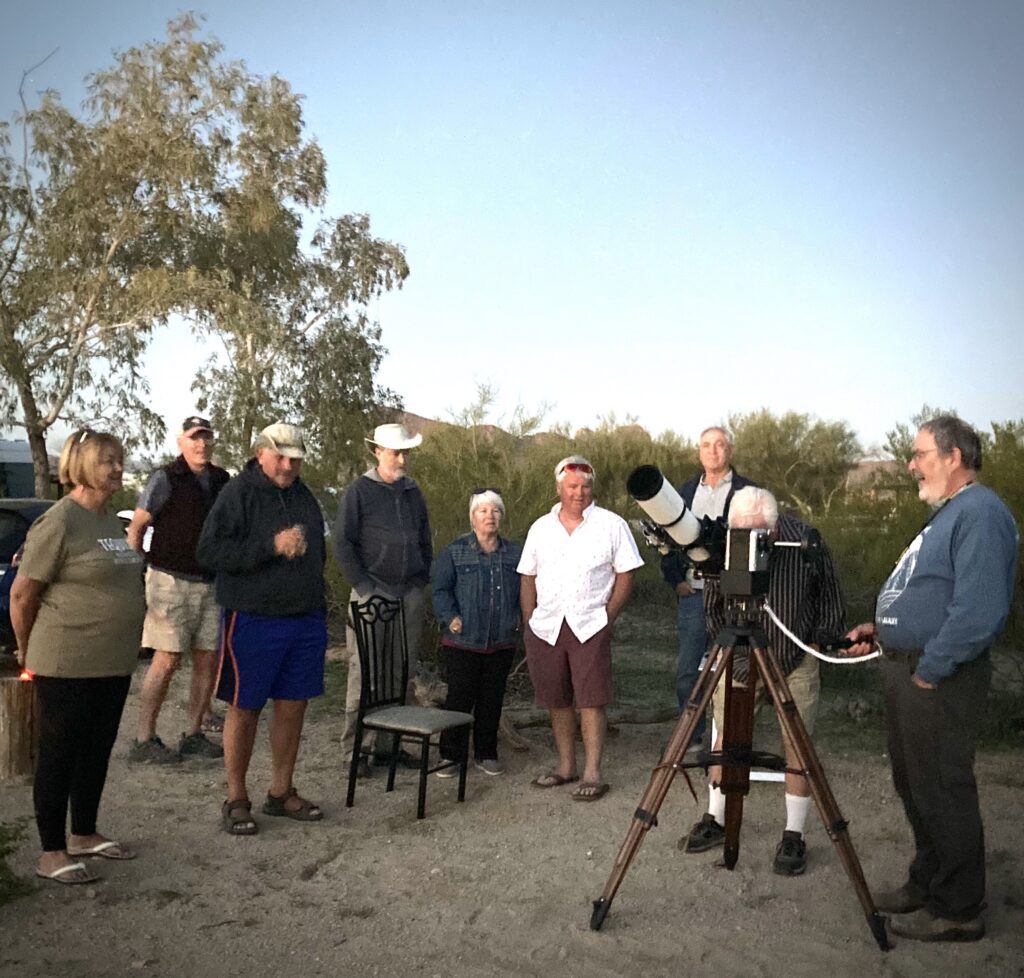
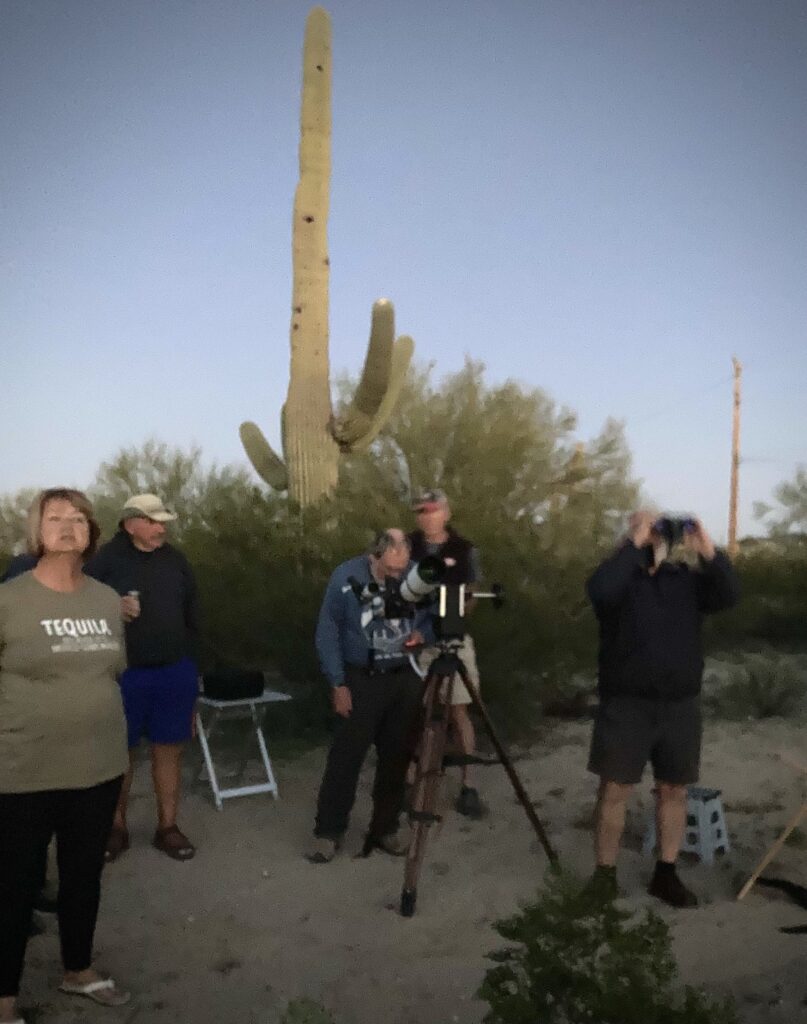
Some mentioned they had never seen so many stars and this struck a chord with Tom. Light pollution was the reason, as stray man-made light interferes with our ability to see these heavenly bodies, and also affects our health! Tom explained how light pollution interferes with the human circadian rhythm and negatively affecting our health, increasing the risk of many diseases including obesity, depression, sleep disorders, diabetes, breast cancer and some other cancers. But how? The evening was drawing to a close, so we thanked Tom and Christine for their generosity in opening their home to us and the time spent on preparing the programme for the evening and took our leave with many questions in our minds.
If you are curious too, go to the International Dark-Sky Association’s website and find the section on Human Health, there, all my queries were answered in depth. From this day forth I will redouble my efforts to avoid the blue light from screens in the evening, and darken my sleeping space. According to the website, our bodies produce the hormone melatonin in response to the circadian rhythm. Melatonin helps keep us healthy. It has antioxidant properties, induces sleep, boosts the immune system, lowers cholesterol, and helps the functioning of the thyroid, pancreas, ovaries, testes and adrenal glands. Nighttime exposure to artificial light suppresses melatonin production.
Of all the visits and guided tours I have enjoyed during my travels on the Western Winter circuit, I have never been as privileged to learn so much in one informal, fun evening. I think I speak for all of the WINs who took part in expressing our gratitude to Tom and Christine, for their generosity in opening their home to us and preparing the event and to Dorris for arranging the ‘Star Party’.
What a wonderful read and how blessed we feel to have our No Pants Ranch home fully appreciated!!! Saludos from the deck of Triplefin in the Sea of Cortez: https://www.triplefin.org/post/re-imagining-the-universe
Hi Jo,
Thank you so much for sending such a positive message, between yourself and Dorris, and all the amazing feedback I’ve been getting for these little reports on the WINs activities, I’ve been encouraged to take the next step, and forward the piece, after some scrutiny by my sub-editor, to a publication that told me last year they would publish anything I wrote! That remains to be seen, but if they do it will hopefully spread the word of both the WINs and the International Dark Skies Association. Thanks again for inspiring me.
By the way, I see you are where I had hoped to be at this time, floating around in the Sea of Cortez! Unfortunately your link is giving me a 404 error message, but I’d love to hear more about YOUR adventures. I’ve done a bit of sailing, but mostly Med and North Atlantic, with a bit of Baltic, chilly waters to be sure!
All the Best
Angela.